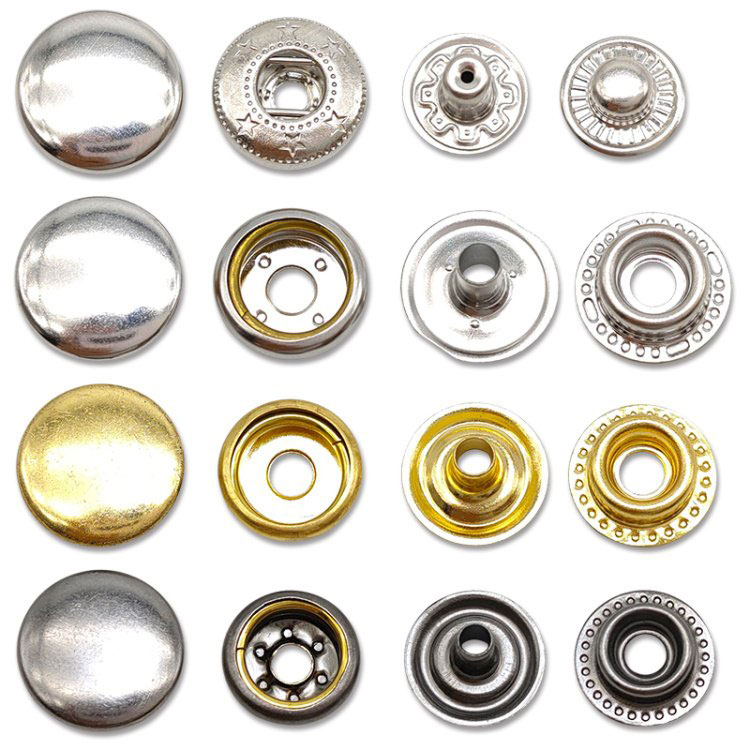what are the manufacturing materials of metal button
2024-03-08
Metal buttons can be manufactured from a variety of materials, depending on the desired appearance, durability, and cost. Some common materials used in the production of metal buttons include:
1. Brass: Brass buttons are popular for their durability, corrosion resistance, and attractive appearance. Brass buttons can be polished to a high shine or given various finishes, such as antique or matte.
2. Stainless Steel: Stainless steel buttons are known for their strength, corrosion resistance, and modern aesthetic. They are commonly used in fashion-forward designs and can be left plain or finished with coatings such as powder coating or electroplating.
3. Aluminum: Aluminum buttons are lightweight, corrosion-resistant, and affordable. They are available in various finishes, including anodized, brushed, or painted, and are often used in casual or outdoor clothing.

4. Zinc Alloy: Zinc alloy buttons, such as those made from zinc or zamak (a zinc alloy containing aluminum, magnesium, and copper), are popular for their versatility and cost-effectiveness. They can be plated with various metals, such as nickel, gold, or silver, to achieve different looks.
5. Copper: Copper buttons offer a unique, rustic appearance and are valued for their warmth and patina over time. They are often used in denim or vintage-style clothing and can be left untreated or given a protective coating to prevent tarnishing.
6. Pewter: Pewter buttons are made from a tin-based alloy and are prized for their soft, malleable texture and antique appearance. They can be cast or stamped with intricate designs and are commonly used in historical or traditional garments.
7. Nickel: Nickel buttons are durable and resistant to tarnishing, making them suitable for a wide range of applications. They can be plated with other metals, such as gold or silver, to enhance their appearance.
These are just a few examples of the materials used in the manufacturing of metal buttons. The choice of material depends on factors such as design requirements, cost considerations, and the intended use of the buttons.


